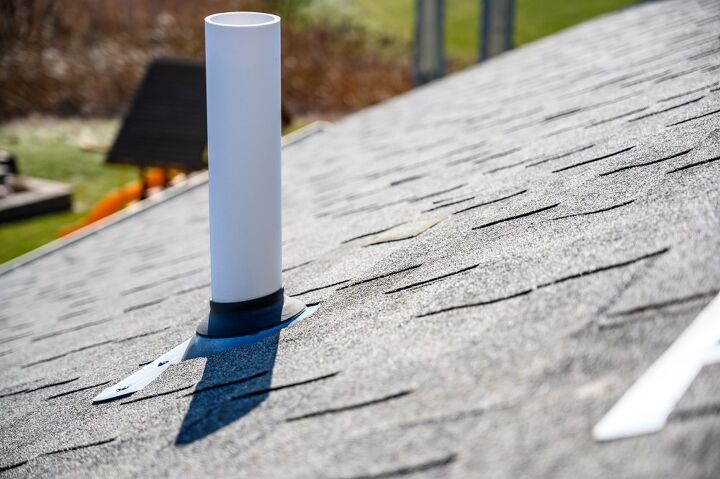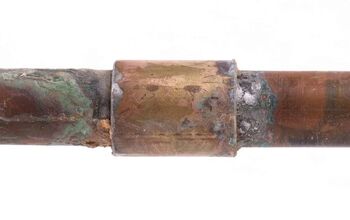What Are The Pipes On My Roof?

When you picture the roof of a home the odds are the only object you imagine sticking out of the roof is a chimney. Indeed, chimneys are the most iconic object to stick out of a home’s roof. They are not, however, the only type of pipes on a roof.
There are, in fact, several different types of pipe on a roof. Each type of pipe serves a different purpose. Some pipes are installed for one simple purpose while others perform essential plumbing, heating, and circulation functions for your home.
The pipes sticking out of your roof are almost always a type of vent. Plumbing vent pipes are quite common. Box vents and HVAC vents are other types of vents that involve piping on a roof. These roof pipes perform a variety of tasks that include dispelling gasses, filtering air, and ensuring smooth functionality and circulation throughout your home.
Do You Need Ducts or Vents Installation or Replacement?
Get free, zero-commitment quotes from pro contractors near you.

Plumbing Vent Pipes
Plumbing vent pipes, also known as vent stacks, are one of the most common types of pipes you will find sticking out of your roof. You may not know they are there or why they exist, but these pipes are essential to the success of your plumbing system.
Release Gasses
One reason for a plumbing vent pipe on your roof is to release sewer gasses from the plumbing system. It is fairly common for gasses to build up in your plumbing system. Without a dedicated air vent to release them you may find a foul odor in your home. These gasses can also be dangerous if not filtered out properly. Plumbing vents, for this reason, are normally located in a room and away from any windows.
Prevent A Vacuum
Another function of a Plumbing vent is to prevent a vacuum effect within your plumbing system. Plumbing vents work with the other pipes in your draining system. However, instead of handling water, they regulate the airflow within the plumbing system.
This is important, because without a plumbing vent a vacuum can be created, which can horribly impact your plumbing system. Instead, plumbing vents ensure a steady drainage and proper flowing plumbing system.
Plumbing vents are one of the most popular types of pipe you will find on your roof. There are, however, several other types of pipes that are found on roofs.
HVAC Vent Stack
Another type of pipe you typically find on a roof is a HVAC Stack. The purpose of the pipes is to properly vent whatever appliance you use to burn fuel. These pipes release the byproduct of whatever fuel your appliance uses.
The appliance in question can be one of several types of devices. It all depends on the location of your home and what type of heating and cooling it requires. Some examples of feel burning appliances that require an HVAC stack include:
- Fireplaces
- Boilers
- Furnaces
- Water Heaters
HVAC vents will often stick straight up, and resemble a pipe-like chimney. If you have one of the above appliances, and do not know the location of its vent, the odds are the pipe on your roof is an HVAC vent.
Box Vent
Box vents are another type of protrusion that comes out of your roof. They do not often resemble the narrow pipes or chimney pipes like plumbing vent pipes or HVAC vents. However, they still can appear to be pipe-like, and they are common in many homes.
There are two major types of box vents. The two types are large box vents and small box vents. The size and type of box vent correspond with the fan or appliance it corresponds with.
Small Box Vent
Small box vents are most often used for more localized functions. The two most common reasons to have a box vent on your roof are either a vent for your bathroom fan or a dryer vent. These small vents are important to release moisture from the air and prevent mold and excess moisture in the home.
Large Box Vent
Large box vents are normally 12” by 12.” These vents include a fan whose job is to filter out both hot air and also moisture from the attic area. The primary function is to help properly circulate this attic air. In doing so, large box vents help keep a regulated climate for your roof and can help increase its longevity as well. These vents work together with intake vents to ensure a smooth cycle of air.
High-Efficiency Furnace Systems
High-efficiency furnace systems are growing in popularity, especially in newer homes. Although they cost more to install initially, they can result in significant energy savings over time. These furnaces benefit from a secondary heating system that heats the air an additional time before it is circulated.
Eventually, however, the heated air is circulated out, and this is where the pipe in the room comes into play. High-efficiency furnace systems require a release vent. These vents are PVC pipes. PVC helps keep them from overheating the surrounding area. This is also a good way of spotting them.
Chimney Pipes
If you have an older home with a fireplace, the pipe in your home may be something as simple as a chimney pipe. Sometimes homes that have been around for generations may have even covered up the chimney itself to create a clean wall line.
When this happens normally the chimney pipe is sealed off, but it is not always removed. Although quite rare, this means there is a chance you can actually have a chimney pipe with no chimney.
Maintaining The Pipes On Your Roof
- Keep Roof Clear Of Debris. A clean roof is a happy roof. Not only does this improve the longevity of your roof but it prevents the risk of your pipes getting clogged. Leaves and other materials potentially get into your pipes and wreak havoc on the system they are designed to help.
- 2. Ensure Nothing Blocks Pipes. Make sure no solar panels, satellites, or other additions to the roof block the airflow of your pipes. This can make the job of these vents much harder.
- Make sure the Area Around Pipes Is Sealed. Any protrusion from your roof is a vulnerable point. It is very important you make sure the area around the pipes is sealed well. Regular inspections and replacement of sealant can prevent roof leaks and other major home damage.
- Check For Deterioration. Just as roofs need to be replaced, the pipes on the roof need to be replaced as well. This is particularly true of metal pipes and chimney pipes. If you notice that your metal pipes are rusting or otherwise deteriorating, you should look into getting them replaced. PVC materials last much longer, but can also show signs of wear due to nature’s elements and other factors. Make sure PVC piping is not warped or cracked whenever your roof is inspected.
Do You Need Ducts or Vents Installation or Replacement?
Get free, zero-commitment quotes from pro contractors near you.

Sealing Up The Pipe Discussion
If you notice a pipe on your roof and are not sure of its purpose, do not be alarmed. There are many types of pipes that can come out of your roof. As you now know, many of these pipes serve essential functions in the home.
Even though many of these pipes have very important jobs, and work every day, it does not mean they need content attention. Some pipes, like plumbing vent pipes, work seamlessly with your plumbing system to ensure a smooth or proper flow. Others, like small box vents, work in tandem with the specific device that they serve (i.e. a bathroom fan).
Regardless of the pipe’s purpose, it is important to check on them from time to time. It is a good idea to have these pipes looked over any time you have your roof looked at by a professional. This can help prevent any unnecessary damage, which can include a leaking roof.

Tom Gaffey is an expert writer who currently resides in Washington D.C. Tom has a passion for real estate and home improvement writing, as well as travel and lifestyle writing. He lived the last twelve years in Hawaii where he worked closely with luxury resorts and event planners, mastering his knowledge of aesthetics and luxury products. This is where he found his passion for home improvement and a keen interest in DIY projects. Currently, Tom resides in Washington D.C, and also working on his debut fiction novel.
More by Tom Gaffey













![10 Best Scroll Saws for 2022 [Ultimate Reviews & Buyer's Guide]](https://cdn-fastly.upgradedhome.com/media/2023/07/31/9070684/10-best-scroll-saws-for-2022-ultimate-reviews-buyer-s-guide.jpg?size=350x220)













